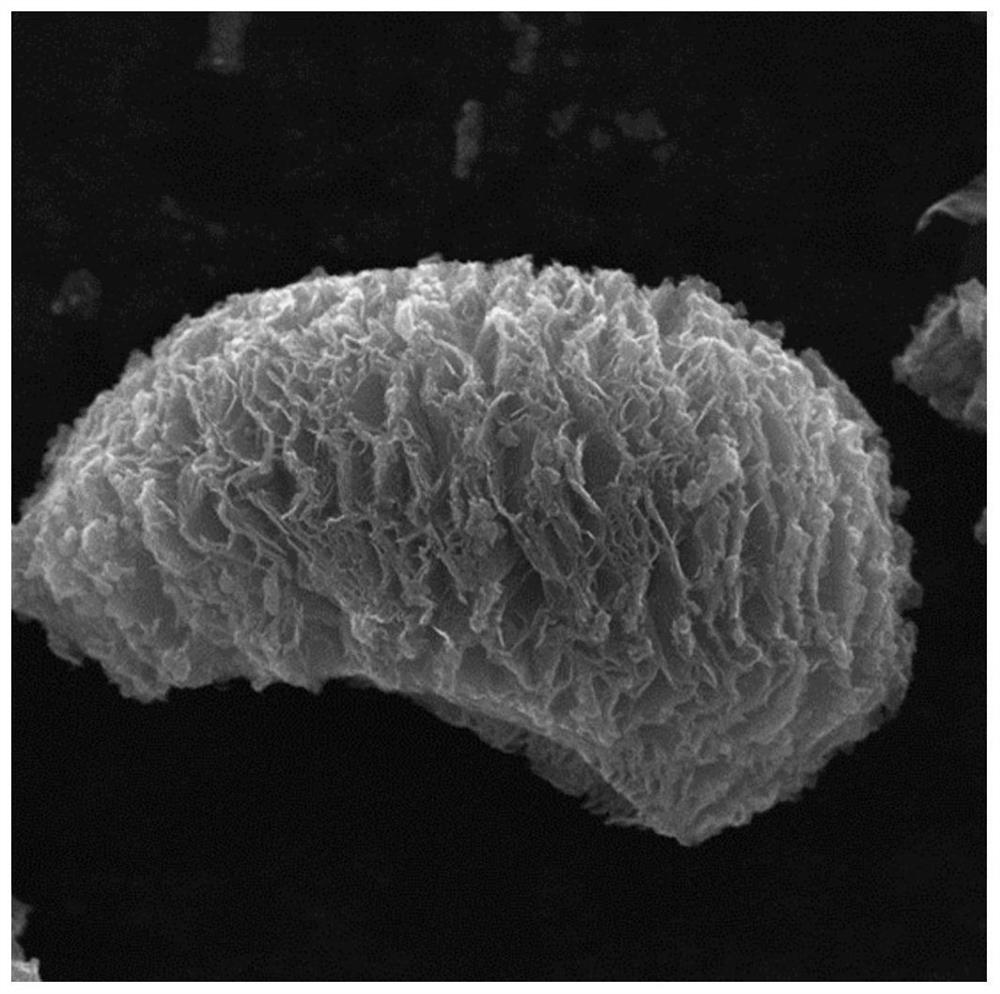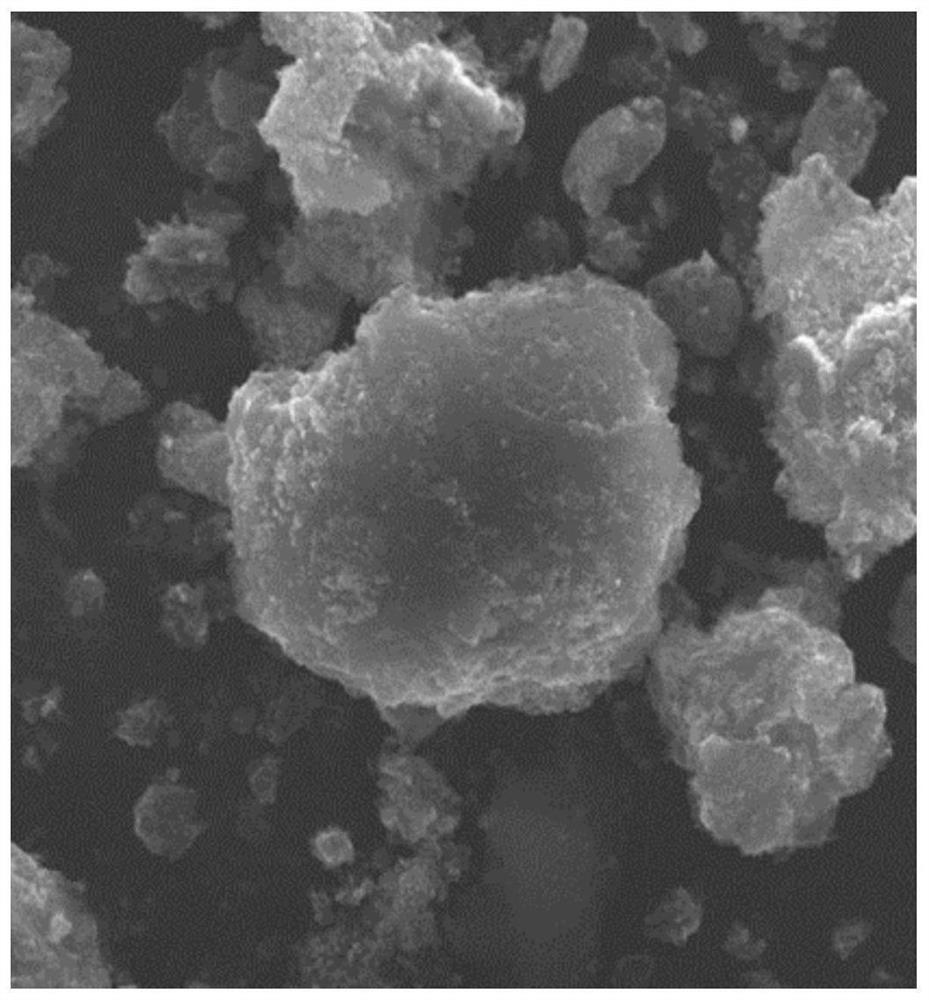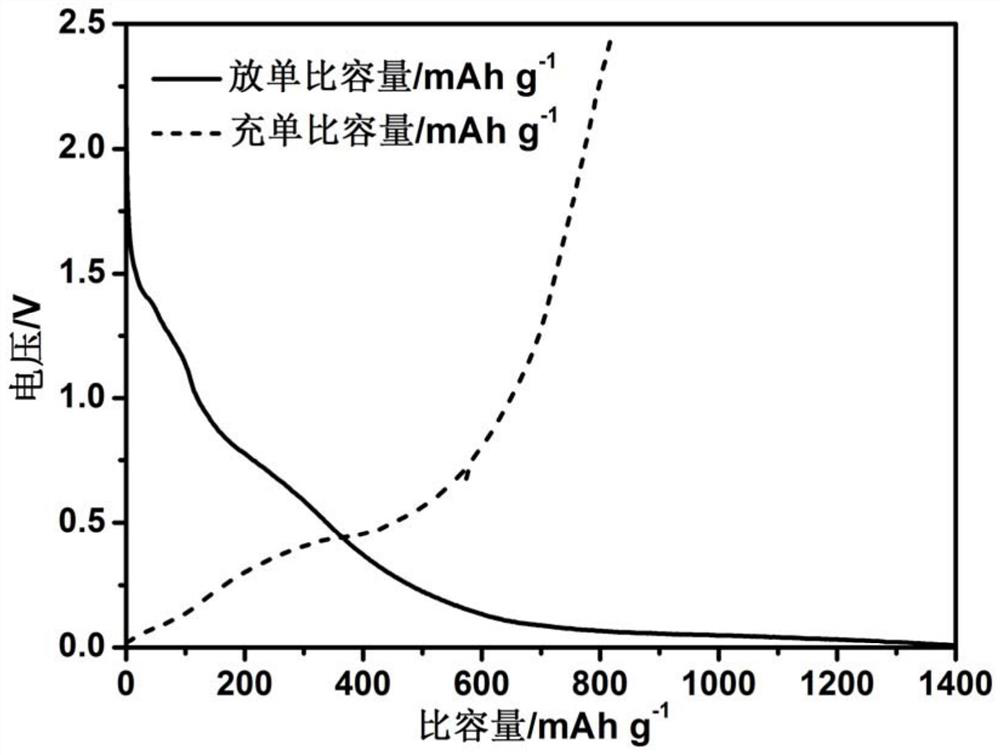A kind of silicon carbon negative electrode material and preparation method
A negative electrode material, silicon carbon technology, applied in the direction of negative electrode, battery electrode, active material electrode, etc., can solve the problems of large volume change and silicon-based material volume change, and achieve strong oxidation resistance, good stability, and enhanced electrical conductivity. sexual effect
- Summary
- Abstract
- Description
- Claims
- Application Information
AI Technical Summary
Problems solved by technology
Method used
Image
Examples
Embodiment 1
[0053]This example provides a silicon-carbon negative electrode material, which includes a catalytic graphite layer and three-dimensional expanded graphite wrapped inside the catalytic graphite layer, and nano-silicon is embedded in the three-dimensional expanded graphite.
[0054] Wherein, the catalytic graphite layer refers to the catalytic graphite layer formed after metal catalysis.
Embodiment 2
[0056] This example provides the preparation method of expanded graphite, specifically:
[0057] The commercial material mesophase carbon microspheres are prepared into graphite oxide by the classic Hummer’s method, and then the graphite oxide is sintered in a tube furnace at 950°C for 10 to 30 minutes to obtain expanded graphite.
[0058] Wherein, the preparation method of graphite oxide is:
[0059] (1) Put mesocarbon microspheres and 2.5 g of sodium nitrate in a 1000 mL three-necked flask, add sulfuric acid, and stir for 15 min;
[0060] (2) Lower the reaction temperature to 4°C, slowly add 16gKMnO 4 , stirring at low temperature for 3h;
[0061] (3) Raise the reaction temperature to 35°C, stir at medium temperature for 3h, and add 200mL of deionized water;
[0062] (4) The reaction temperature was raised to 98°C, and 15 mL of 30% H 2 o 2 , stirring at high temperature for 5h;
[0063] (5) cooling to room temperature, centrifuging and washing and separating the reacti...
Embodiment 3
[0065] This example provides the preparation method of silicon carbon negative electrode material, and the steps include:
[0066] S1: After mixing the expanded graphite, nano-silicon, carbon source and catalyst precursor, heating and evaporating to dryness to obtain the precursor;
[0067] S2: sintering the precursor in step S1 under an inert atmosphere and then washing and drying to obtain a silicon-carbon negative electrode material.
[0068] In step S1, during the mixing process of the nano-silicon and the expanded graphite, the nano-silicon enters into the three-dimensional layered structure of the expanded graphite.
[0069] In step S2, the carbon source is sintered under the action of the metal catalyst to generate catalytic graphite, which is evenly coated on the surface of the three-dimensional expanded graphite.
[0070] Wherein, the average particle size D50 of nano-silicon is less than 100nm.
[0071] Carbon sources include glucose, sucrose, starch, citric acid, ...
PUM
| Property | Measurement | Unit |
|---|---|---|
| particle size | aaaaa | aaaaa |
| particle size | aaaaa | aaaaa |
| current efficiency | aaaaa | aaaaa |
Abstract
Description
Claims
Application Information
 Login to View More
Login to View More - R&D
- Intellectual Property
- Life Sciences
- Materials
- Tech Scout
- Unparalleled Data Quality
- Higher Quality Content
- 60% Fewer Hallucinations
Browse by: Latest US Patents, China's latest patents, Technical Efficacy Thesaurus, Application Domain, Technology Topic, Popular Technical Reports.
© 2025 PatSnap. All rights reserved.Legal|Privacy policy|Modern Slavery Act Transparency Statement|Sitemap|About US| Contact US: help@patsnap.com



